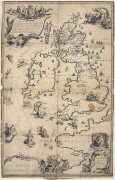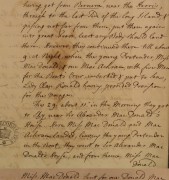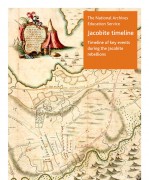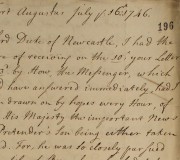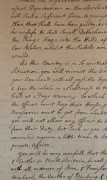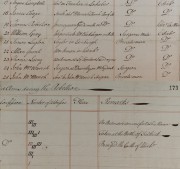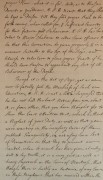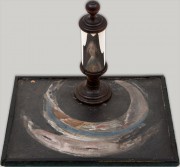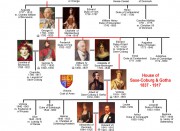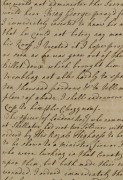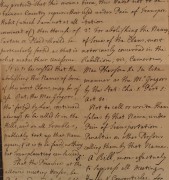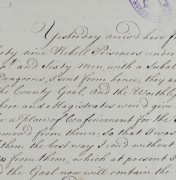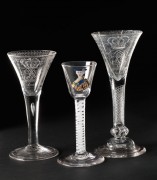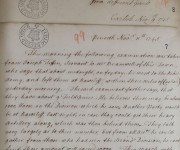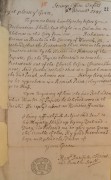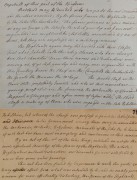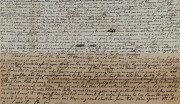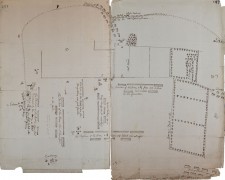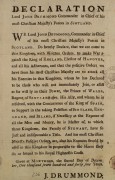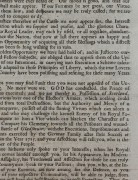
Download documents and transcripts
Teachers' notes
The purpose of this document collection is to allow students and teachers to develop their own questions and lines of historical enquiry on the Jacobite Rebellion of 1745.
There is also a second collection based on the Jacobite Rebellion of 1715.
The documents themselves are titled on the web page so it is possible for teachers and pupils to detect different themes and concentrate on documents on similar topics if they wish. Some of the topics include:
- accounts of the battle of Culloden and Prestonpans
- Flora MacDonald
- control of Scotland
- the lives of Jacobite soldiers
- Jacobite trials
- treatment of Jacobite prisoners
- the defence of London
- Charles Edward Stuart
- Jacobite support from abroad
- examples of museum objects such as a secret portrait
- the Prince’s clothes and some Jacobite glass
Students can work with a group of sources or source type on a certain theme or linked themes. They can also match documents to the timeline provided as a starting point. We hope that the documents will offer them a chance to develop their powers of evaluation and analysis. Alternatively, teachers may wish to use the collection to develop their own resources or encourage students to ‘curate’ their own ‘exhibition’ of the most significant sources on the topic or they could attempt the enquiry question on the Jacobite Rising of 1745: A serious threat to the Hanoverians? Students could also use more documents from other linked websites.
All of our sources have been provided with a transcript and more difficult language has been explained in square brackets to support students. Obvious differences in the spelling have not been altered however. Each source is captioned and dated to provide a sense of what the document is about. Nearly all written sources have an audio version where appropriate. All document images and sound files can be downloaded as a zip file for educational purposes.
The resource includes an introduction by a historian of the period, Daniel Szechi, family trees of the Houses of Hanover and Stuart and a timeline all to help provide further context to the documents.
Finally there is a Pinterest Board on the Jacobites available which could serve as an exciting window into the topic of the Jacobites as a whole as well as two short movie clips based on the sources used in both of our resources on the risings of 1715 and 1745.
Connections to the curriculum
Key stage 3
The Jacobite uprisings: 1715 & 1745
Key stage 4
OCR War and British Society c.790 to c.2010: The Jacobite Wars 1715 and 1745: the impact on Scotland of the repression of the Jacobites.
Key stage 5
OCR British Period Study: The Making of Georgian Britain 1689–c.1760: Jacobitism, the ’15 and the ’45
Introduction
By Professor Daniel Szechi
Unlike the rebellion of 1715, the ‘45 came out of nowhere. As far as the Whigs, who had ruled Britain as a one-party state since 1714 were concerned, the Jacobite threat was over. But with the rejection of the Tories in England, the continuing persecution of Catholics in Ireland and the on-going sense of betrayal with respect to the Union among a sizeable minority in Scotland, the Jacobite movement remained alive in all three kingdoms.
The Jacobite King James III’s energetic and handsome son, Charles Edward Stuart, (Bonnie Prince Charlie) had also come to represent a bright new hope for many Jacobites. Then in 1739, for the first time in twenty years, Britain became involved in a major European war. Both France and Spain’s interest in supporting a Jacobite revolution was revived, and in 1743-4 the French government secretly allied with King James and the English Tories and planned to launch an invasion of England led by Charles Edward. At the last minute, hesitation on the part of the Tories, bad weather and the action of the Royal Navy prevented the invasion. The relieved British government soon released the Tory leaders swept up in a wave of arrests when news of the French plan broke, and the troops brought over to fight any invasion went back to the war in Flanders. As the months passed and the Jacobites kept their heads down, government control relaxed and life carried on. Meanwhile in France the Jacobite prince was quietly preparing his own daring venture.
Depending on how you view it, Charles Edward’s plan was either foolhardy or brilliant. By 1745 many French merchant companies were involved in financing privateering ventures to attack British shipping. With the help of Irish merchants in Nantes in France, Charles Edward was thus able to prepare a small secret expedition to Scotland without alerting either the British or French governments. On 5 July 1745 his two ships (Du Teillay and Elisabeth), laden with money, arms and Irish troops in French service set sail for Scotland. They were stopped by a patrolling Royal Navy warship and fought a hard action that so damaged the Elisabeth that she had to return to France, but — nothing daunted — Charles Edward sailed on to Scotland and on 23 July landed on Eriskay.
He managed to gain support in Scotland by skilfully presenting the Scots Jacobites with a problem: they could rise to follow him and possibly have to take on the military might of the British government, or they could betray their principles and abandon him to possible capture and death. The first response of many Scots Jacobites was to refuse to act without major French support, but Charles tilted the balance in favour of going it alone to begin with by promising them that he had assurances the French would invade and the English Jacobites would rise if he raised Scotland and invaded England with a Jacobite army. Most Scots Jacobites were persuaded to follow him on this basis, and so began the ’45.
Professor Daniel Szechi is the author of The Jacobites: Britain and Europe 1688-1788.
External links
- Education Scotland website to support teachers and students in Scotland
- BBC Scotland Learning website looking at Culloden, aimed at key stage 2-3
- Find more printed broadsheets, maps and plans relating to Scottish history
- The National Trust for Scotland (Culloden)
- Search the National Galleries of Scotland collection for Jacobite portraits
- The Royal Commission on the Ancient and Historical Monuments of Scotland
- The Scottish Archives for schools has details of its resources and Schools programme
- The BBC history website provides an outline of both Jacobite uprisings
